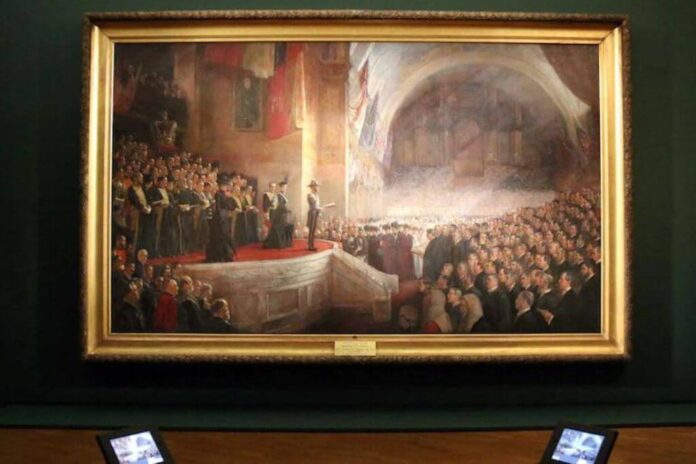Australia, with its modest inhabitants, has produced several renowned painters who are idolized worldwide. We chose 10 of the most well-known works by Australian painters, whose relaxed, rural aesthetic I found appealing.
1. Spring Frost – Elioth Gruner
Elioth Gruner, an Australian painter, created Spring Frost in 1919. A tiny herd of dairy cows in the early morning is shown in the painting. The Wynne Award was given to Gruner’s most well-known painting, Spring Frost, in 1919.
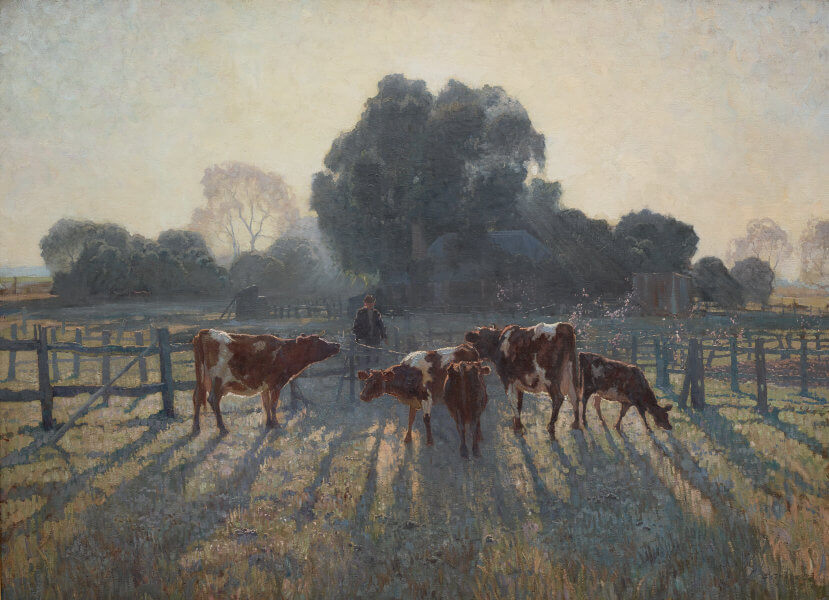
The majority of Spring Frost was created outside on the farm Jim Innes inherited from his father Isaac Innes in Emu Plains, today an outer western suburb of Sydney. This artwork features James Innes and his livestock. This farm is seen in Elioth Gruner’s painting “Morning Light.” Gruner constructed a small shelter on the painting site to shield the canvas, and he wrapped his legs in chaff sacks to prevent frostbite.
2. The Pioneer – Frederick McCubbin
Frederick McCubbin, an Australian painter, created The Pioneer in 1904. In three panels, the triptych-style picture depicts a free selector and his family surviving in the Australian wilderness. It is widely regarded as one of Australia’s greatest works of art.
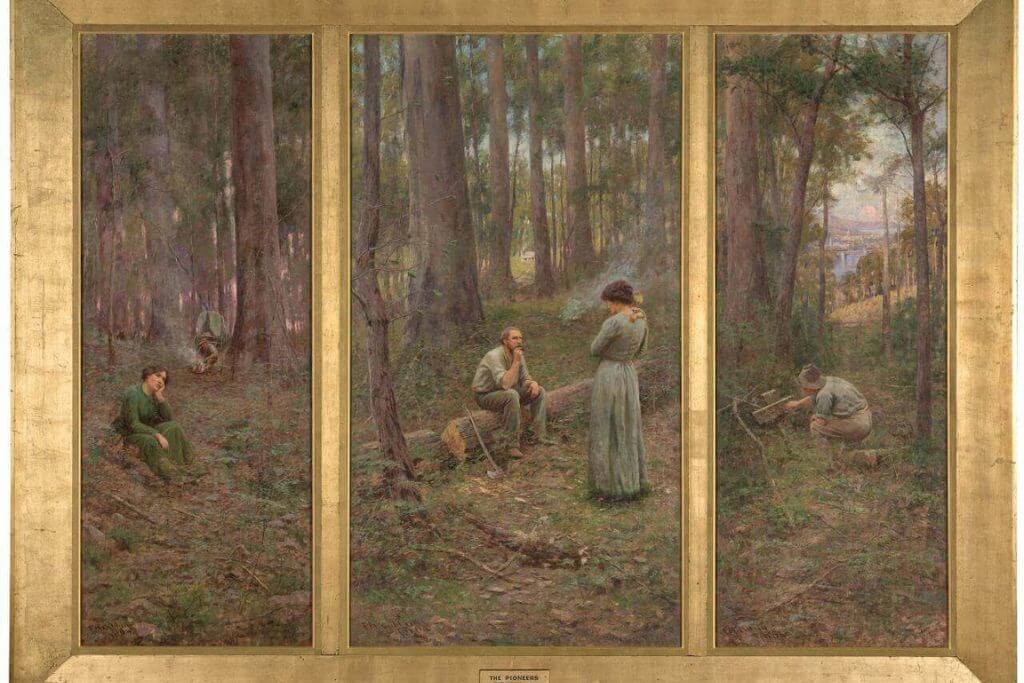
The selector and his wife are seen making their decision in the left panel; the woman is shown in the foreground, deep in thought. The baby in the woman’s arms in the center panel suggests some time has passed. The family’s home, a cottage, is visible in a clearing in the trees.
A young man is depicted in the right panel standing over a tomb. Time has gone once more because a metropolis may be seen in the distance. It’s unclear if the young man in the middle panel is the infant or a stranger who just happened to stumble across the cemetery.
3. Down on His Luck – Frederick McCubbin
The 1889 work Down on His Luck by Australian artist Frederick McCubbin. It shows a swagman who appears defeated as he sits by a campfire and muses about his misfortune. According to a review from 1889, “McCubbin’s picture is authentically Australian in character.”
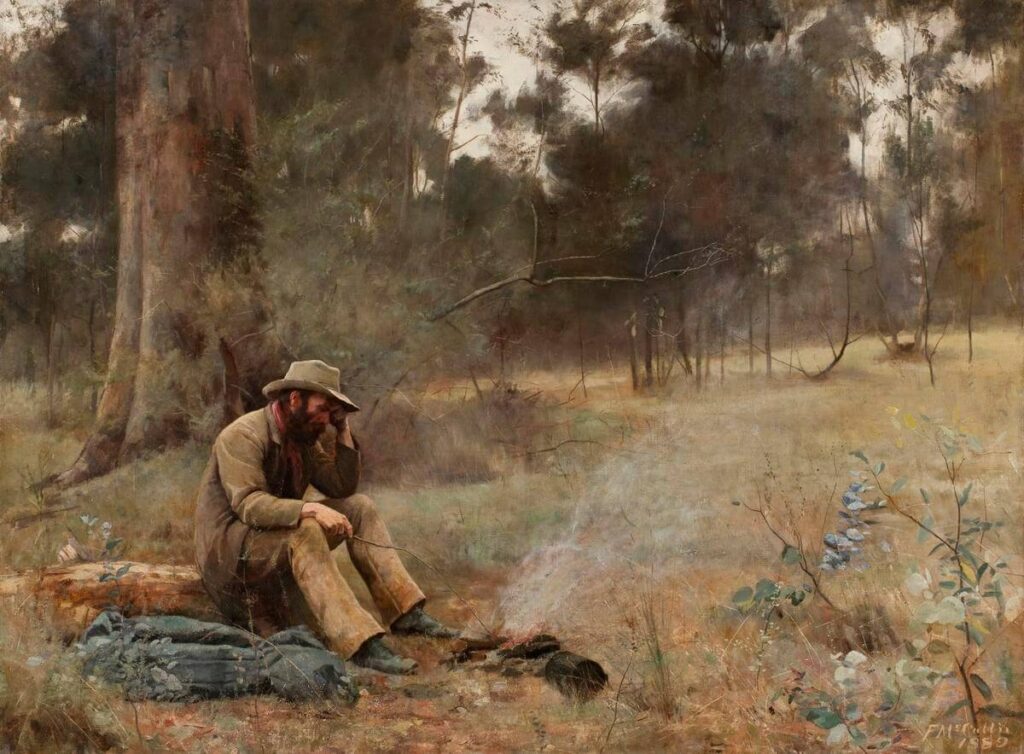
While the subject’s face “tells of trials, acute and blighting in their influence,” there is a casual and slightly sarcastic attitude that announces the absence of all self-pity. His melancholy and reflective demeanor is reflected in the bush’s muted color scheme.
Louis Abrahams, a Melbourne friend and prominent tobacconist who had previously provided the cigar box lids for the renowned 9 by 5 Impression Exhibition, served as the artist’s model. Although the scenario was filmed close to the Box Hill artists’ camp outside of Melbourne, it is likely that McCubbin made further portraits of Abrahams in a studio setting.
4. A break away! – Tom Roberts
A stampede of thirsty sheep charging toward a dam is shown in the picture. Before they drown or crush one other in their thirst for alcohol, a drover on horseback is attempting to turn the crowd. The sculpture by Roberts, which has been dubbed an “icon of Australian art,” is one of a collection that “captures what was an emerging spirit of national identity.”
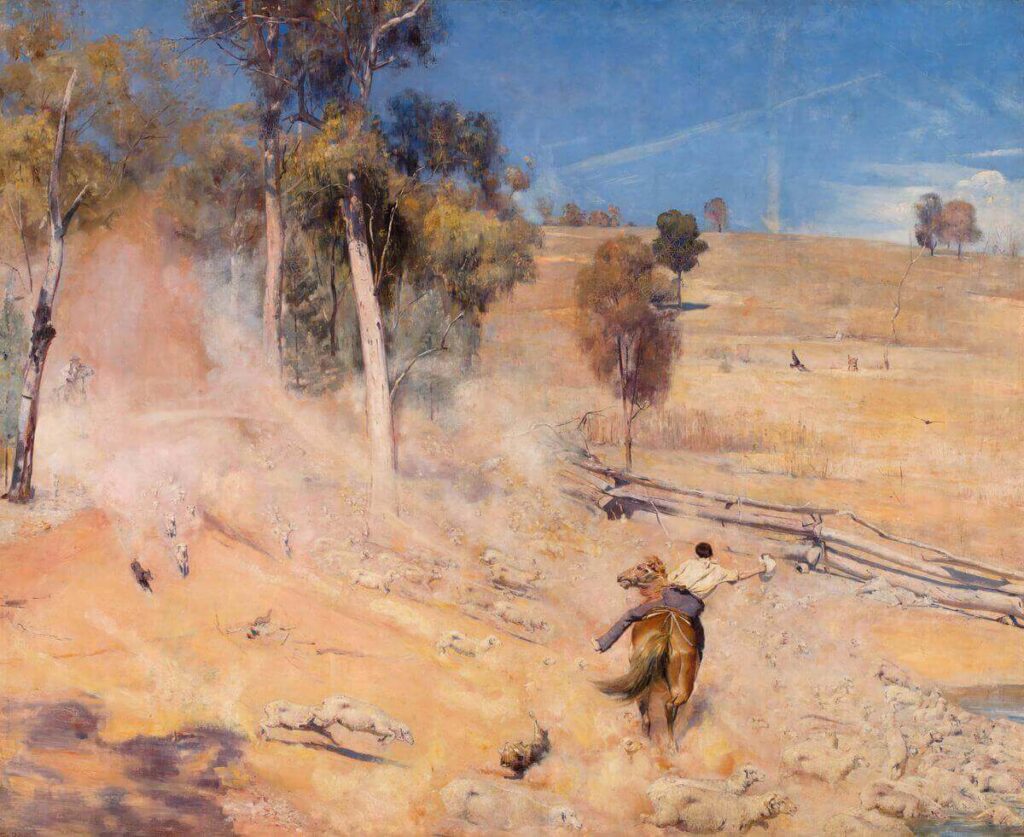
At Corowa, Roberts painted the piece. A dry period is depicted in the painting, with sparse grass and dusty earth. The piece is a commentary on the pastoral industry’s early years, which ended in the 1890s.
5. The Big Picture – Tom Roberts
Tom Roberts, an Australian painter, created The Opening of the First Parliament of the Commonwealth of Australia by H.R.H. The Duchy of Cornwall and York (later H.M. King George V), May 9, 1901, is more well known as The Big Picture in Australia.
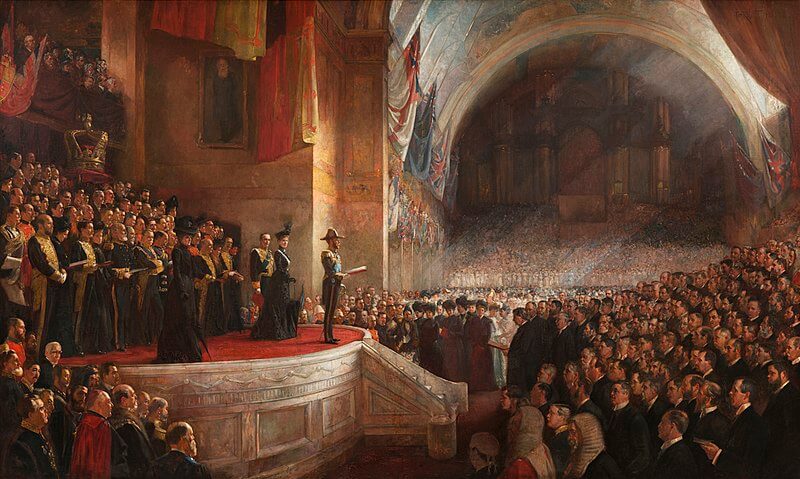
The artwork, which is around 10 by 17 feet in size and measures 304.5 by 509.2 centimeters (119.9 in 200.5 in), shows the first Australian Parliament opened on May 9, 1901, at Melbourne’s Royal Exhibition Building.
Although it is a piece of the Royal Collection, the artwork has been permanently loaned to the Australian Parliament since 1957. Undoubtedly the key piece of art documenting Australian parliamentary history, the piece is currently on exhibit in Parliament House in Canberra.
6. Bailed Up – Tom Roberts
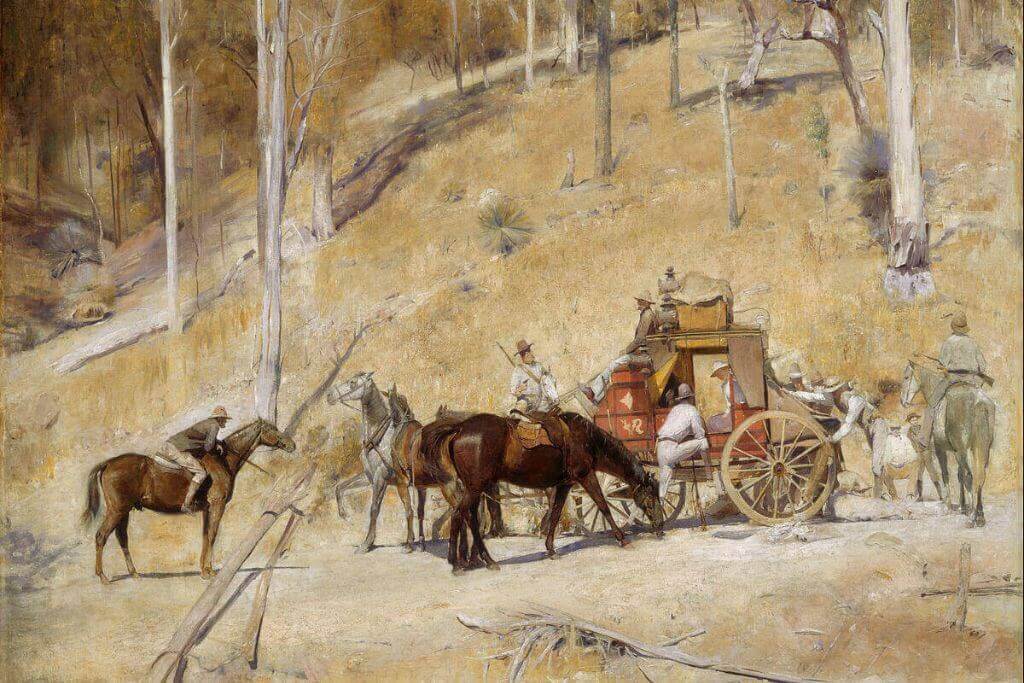
In a remote, heavily forested area of the painting, bushrangers are holding up a stagecoach. The picture is a part of the Art Gallery of New South Wales’s collection. And has been referred to as “the greatest Australian landscape ever painted” by the former Senior Curator.
7. Golden Summer, Eaglemont – Arthur Streeton
Arthur Streeton, an Australian painter, created the 1889 picture Golden Summer, Eaglemont. It is a lovely portrayal of sunlight, and rolling plains in rural Heidelberg on Melbourne’s outskirts, painted by Streeton when he was twenty-one years old during a summer drought.
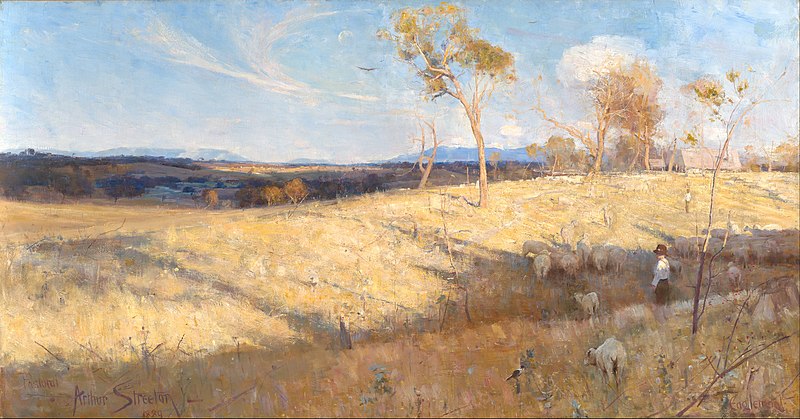
It is a prime example of the artist’s characteristic, high-keyed blue and gold palette, what he deemed “nature’s scheme of color in Australia.” It is naturalistic yet lyrical, and Streeton made a conscious effort to create his most epic piece yet. One of his most well-known pieces, it is regarded as a pinnacle of Australian Impressionism.
8. The cricketers – Russell Drysdale
Russell Drysdale, a native of Australia, painted The Cricketers in 1948. Three lads are shown in the painting, two of them watching the other play cricket as they are situated among the buildings of a deserted town.
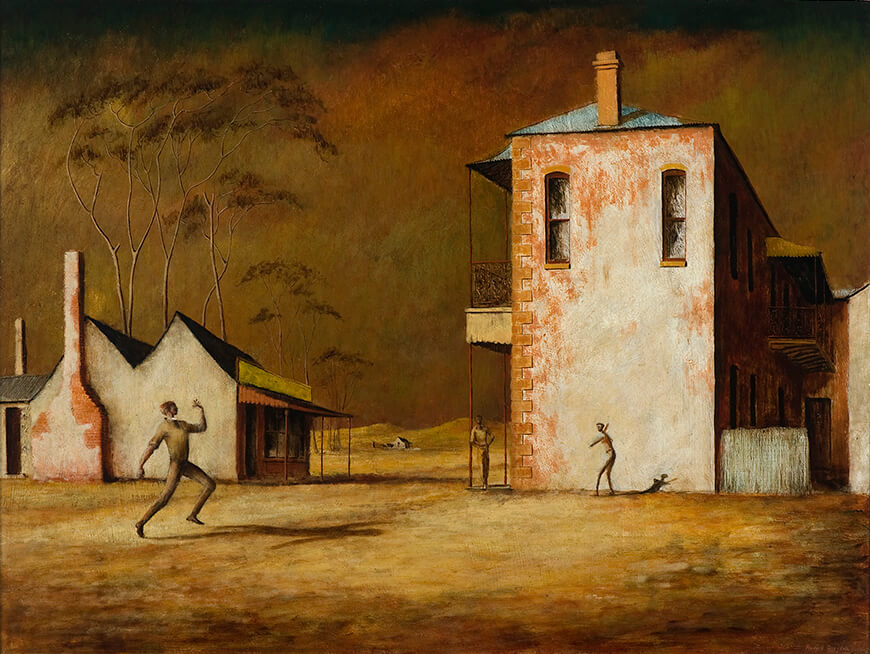
One of the “most original and disturbing pictures in all Australian art,” according to the National Gallery of Australia, defines the painting. The work is “perhaps the most famous Australian painting of the 20th century,” according to The Sydney Morning Herald.
9. The Sock Knitter – Grace Cossington Smith
Grace Cossington Smith, an Australian artist, painted The Sock Knitter in 1915. The woman knitting a sock in the painting is presumably the artist’s sister. It has been hailed as the first post-impressionist painting to be displayed in Australia and was Cossington Smith’s first piece to be shown publicly.

The piece was displayed in the National Gallery of Victoria’s 2015 Follow the Flag exhibition. The Sock Knitter “has come to symbolise Australian women’s commitment to the [First World War] effort, which included knitting more than 1.3 million pairs of socks,” according to exhibition literature.
10. Art, Life and the other thing – Brett Whiteley
Australian artist Brett Whiteley’s triptych work Art, Life, and the Other Thing, which won the Archibald Award in 1978, mixes three different media.
In the middle canvas, Brett Whiteley is seen with his hands clutching and his head moving while standing side-on to the viewer. William Dobell’s black-and-white portrait of Joshua Smith is in one hand, and he is painting this picture with a paintbrush with the other. His left side is almost completely empty as his body extends vertically to the canvas.
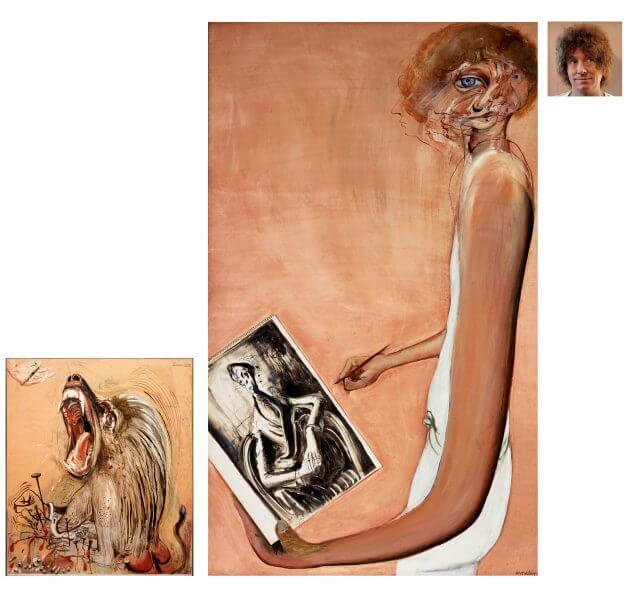
In particular, the exaggerated and disoriented aspects of the figure’s head, where Whiteley is displaying movement, are particularly prominent. This movement gives the skull an extremely abstract appearance. Unrealistically long and lanky are the arms, legs, and torso. The body is dressed in an all-white two-piece ensemble.
The head turns, turning from a mess of hazy lines on the left to virtually photorealistic on the right, becoming more solid and lifelike. Whiteley had added his own hair to the piece on the right side to increase the authenticity. The background has a pale orange color.
